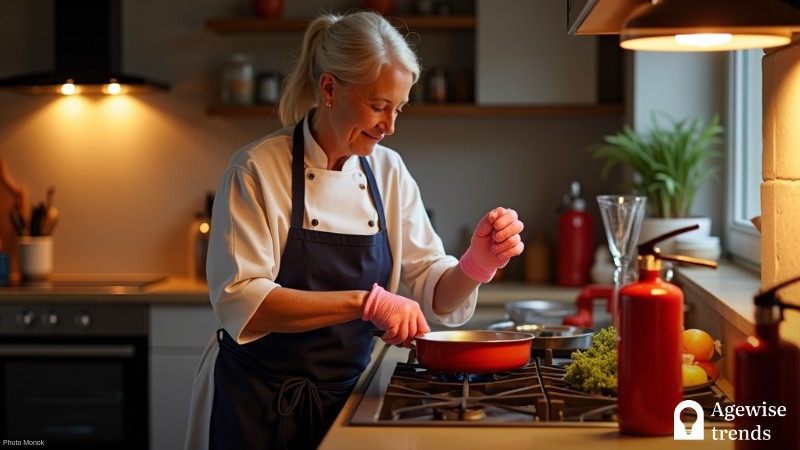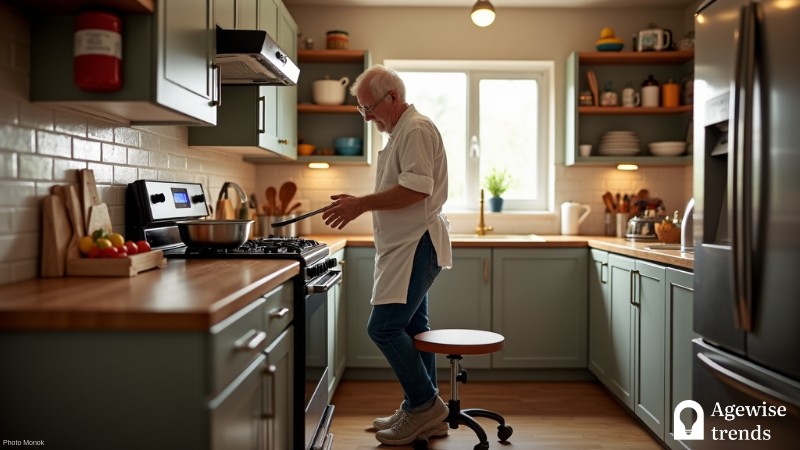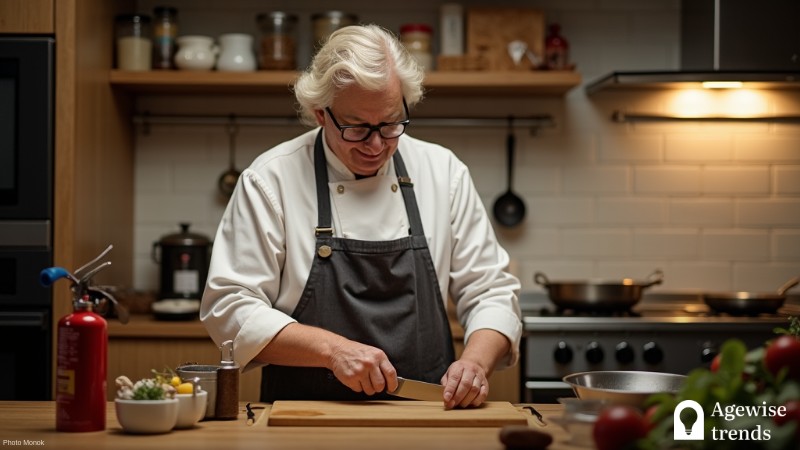Lighting is one of the most overlooked aspects of kitchen safety, yet it plays a crucial role in preventing accidents. For the aging population, proper lighting is not just about visibility—it affects depth perception, contrast recognition, and reaction time.
A poorly lit kitchen can increase the risk of burns, cuts, spills, and even falls. Many seniors experience changes in vision due to aging, making it essential to adapt kitchen lighting to their needs.
Key Takeaways
Proper lighting in kitchens is crucial for preventing accidents, especially among older adults.
- Poor kitchen lighting increases risks of burns, cuts, spills, and falls due to reduced visibility and depth perception.
- Adaptive solutions like LED under-cabinet lights, color-tunable bulbs, and anti-glare diffusers improve safety by enhancing visibility.
- Strategic placement of motion-activated and task-specific lights ensures well-lit critical areas in the kitchen.
When shadows become hazards
A kitchen that lacks adequate lighting creates an environment where everyday tasks become hazardous. Dim or shadowy spaces make it difficult to see sharp objects, read labels, or assess food properly. For seniors with conditions like cataracts, macular degeneration, or glaucoma, these issues are even more pronounced.
One of the most common dangers in a poorly lit kitchen is the risk of misjudging distances. A knife that appears further away than it actually is can lead to accidental cuts. Similarly, when lighting is too dim, spills on the floor may go unnoticed, increasing the likelihood of slips and falls. Insufficient lighting over the stove or counters can also result in seniors accidentally touching hot surfaces or knocking over pots and pans.
Another issue is the harsh glare that certain lighting fixtures can create. Bright, direct overhead lights can cause reflections on glossy surfaces like countertops and appliances, making it harder to see clearly. This can be just as problematic as dim lighting, as it can distort vision and cause discomfort, leading to disorientation.
Brighter spaces, safer places
As vision declines with age, distinguishing between similar shades becomes more difficult. A white plate on a white countertop, for example, may blend in, making it harder to see and increasing the risk of dropping items.
To address this issue, seniors can benefit from adaptive lighting with adjustable brightness and color temperature. LED under-cabinet lighting provides focused, shadow-free illumination directly where it’s needed, ensuring better visibility of countertops and cutting surfaces. These lights can be installed beneath overhead cabinets to illuminate workspaces without casting shadows that obscure objects.
Another effective solution is color-tunable LED bulbs, which allow users to adjust the warmth or coolness of the light. Seniors with vision impairments can experiment with different color temperatures to find the setting that improves their ability to distinguish objects.
Additionally, anti-glare light diffusers can be used to soften overhead lighting and reduce the strain caused by reflections on shiny surfaces. These diffusers help distribute light evenly, eliminating sharp contrasts that might make it difficult to judge depth and distance accurately.
Lighting the way to a safer kitchen
Proper lighting placement is just as important as the type of lighting used. Many kitchens rely solely on overhead lights, which create shadows and leave critical areas like countertops and the stovetop poorly illuminated. Strategic placement of lights can make a significant difference in kitchen safety.
For the elderly, motion-activated LED lights are an excellent solution, especially in areas like pantries or under sinks where shadows are common. These lights automatically turn on when movement is detected, reducing the need to fumble for switches and ensuring that frequently used spaces are always well-lit.
Task lighting over workstations is another essential component of a well-lit kitchen. Adjustable, swivel-arm LED task lights can be installed near stoves, sinks, and prep areas to provide targeted illumination exactly where it’s needed. These lights can be positioned to avoid shadows and ensure that seniors can see what they are chopping, stirring, or handling.
If you need extra guidance at night, illuminated floor strips along pathways provide a clear visual guide to the kitchen area, helping prevent nighttime falls. Placing touch-activated nightlights near doorways and walkways ensures that seniors can navigate safely without needing to search for light switches in the dark.
The right kitchen lighting isn’t just about aesthetics—it’s a crucial factor in ensuring a safe and functional space for seniors. Poor lighting can contribute to misjudged distances, unnoticed spills, and difficulty handling sharp or hot objects, all of which pose significant risks. Fortunately, with the right adaptive tools, seniors can create a kitchen that is both well-lit and easy to navigate.














